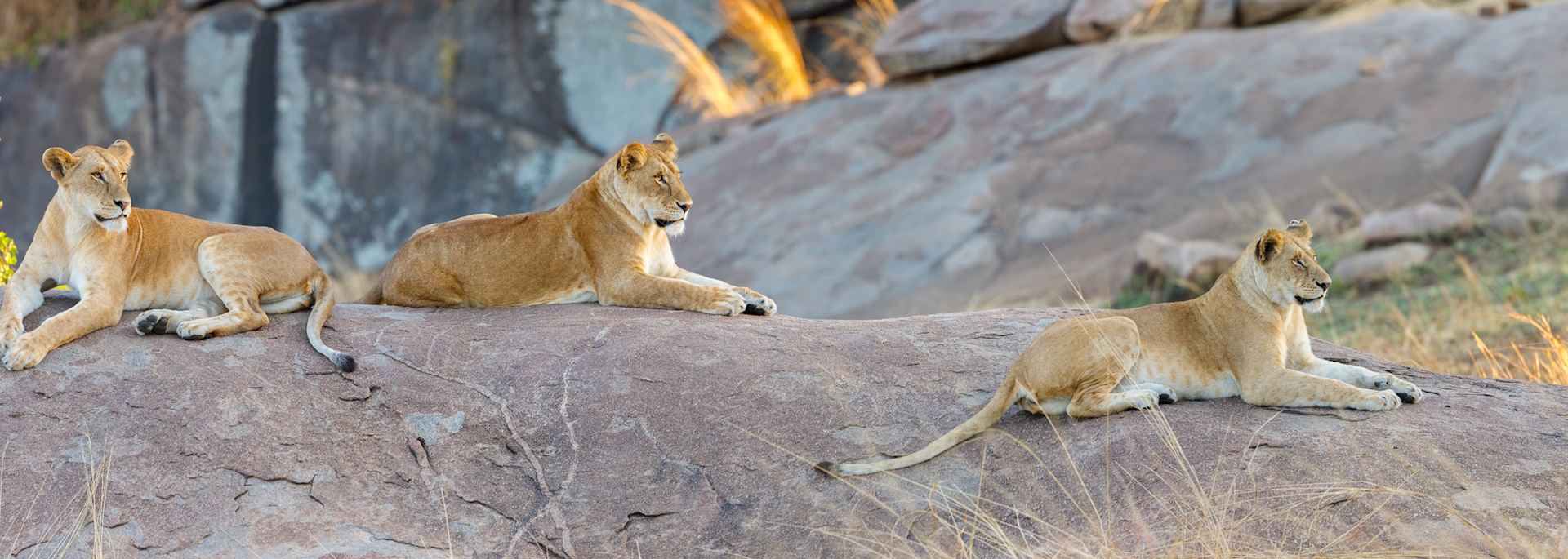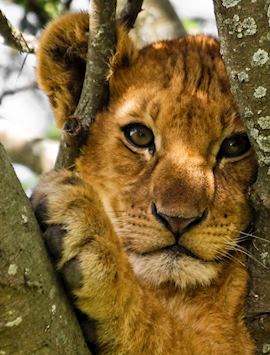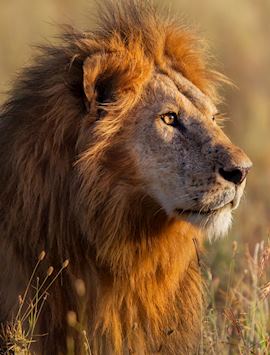By Tanzania specialist Dickie
I’m envious of anyone embarking on a safari, whether it’s your first or fifth. There’s nothing quite like seeing a giraffe strolling gracefully across the plains or getting so close to an elephant that you can feel the waft of air from its flapping ears and smell the dust on its body.
While I’ve been on safari across Africa, Tanzania holds a special place in my heart. In the north, volcanic landscapes provide a habitat for everything from endangered black rhinos to flamingoes, and the Serengeti’s plains are flooded with wildebeests undertaking the Great Migration. Down in the remote south, meanwhile, it feels like you’re the first to have set foot in an untouched wilderness.
North or south Tanzania?
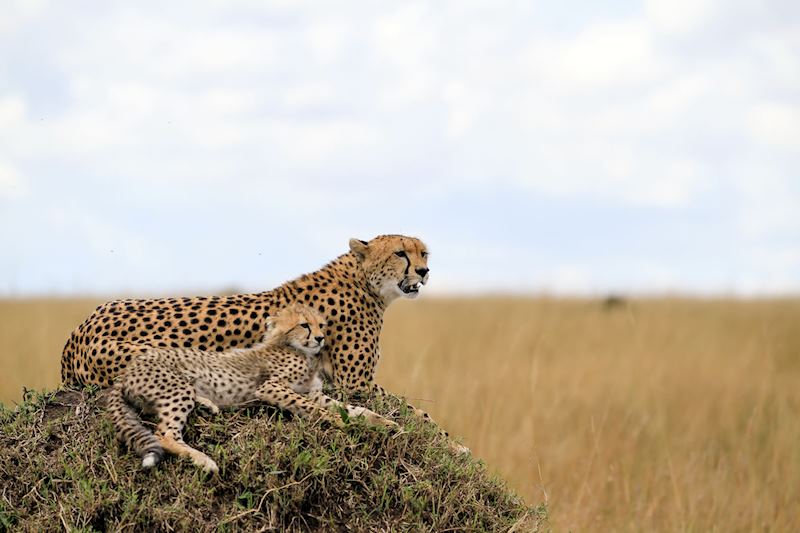
There’s a case to be made for visiting both the north and the south of Tanzania on one safari. While this is certainly possible, time and budget restraints mean that more often than not you’d visit one or the other before enjoying some beach time on the coast or in Zanzibar.
The north sees far more visitors than the south. Logistically, it’s easier to get around as you fly into Kilimanjaro International Airport and are then driven between the different wildlife areas. In the south you’d fly into Dar es Salaam before taking light aircraft flights between each area.
A big draw of the north is Serengeti National Park and its role in the Great Migration. Each year, more than one and a half million wildebeests, zebras, and gazelles enter the park from Kenya’s Masai Mara, following the rains south to have their young.
However, if you’re a seasoned safari-goer, or prefer a more secluded, back-to-basics safari experience, I can’t recommend southern Tanzania enough. Its parks and reserves offer what safaris are all about: getting away from the material world and soaking in the nature of the bush.
Here you can embark on boat and walking safaris as well as wildlife drives. And, in some cases, you can venture off-road in your vehicle to get even closer to the animals you encounter.
Safaris in northern Tanzania
Serengeti National Park
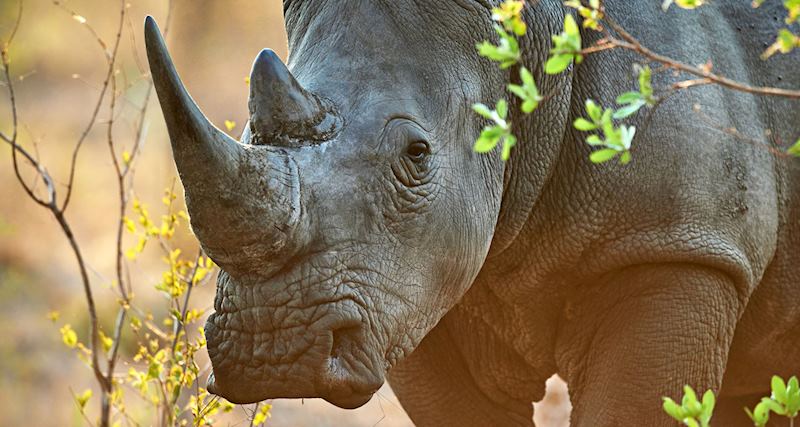
Tanzania’s flagship safari destination, the Serengeti sees the most visitors of all the country’s parks and reserves, but for good reason. With its name meaning ‘endless plains’ in the Maasai language, this vast expanse of land not only plays host to the Great Migration for much of the year, but also provides a permanent habitat for larger animals, from lions, cheetahs, and leopards to elephants, hyenas, and buffaloes.
Wherever you stay in the park, you’re able to join guided morning and afternoon drives. I also recommend joining at least one full-day drive during your stay to explore farther afield and have a picnic lunch out in the bush.
Each drive is punctuated with special moments you can’t predict. Like the time I encountered a young leopard eating its kill in the branches of a tree. After watching it for a few minutes, its mother arrived and I observed them interacting with each other.
The wildlife is less timid than in the south, so animals tend to be unfazed by your presence.
Experiencing the Great Migration
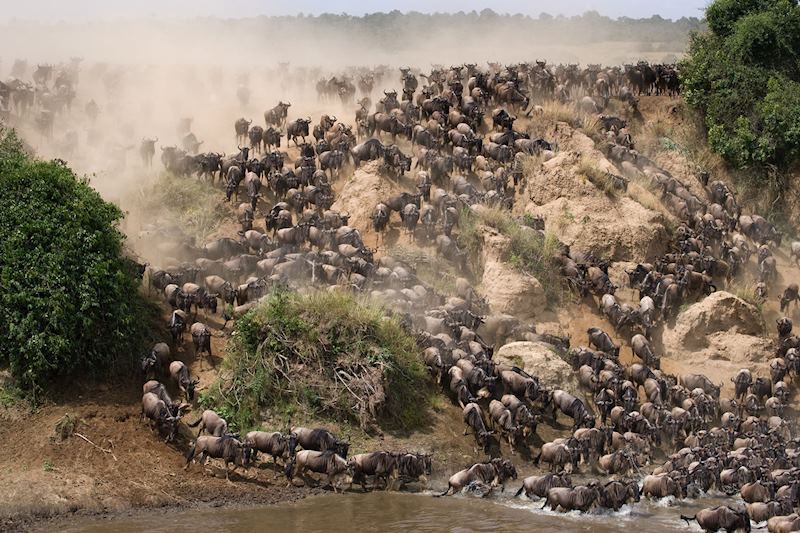
The vast majority of the Great Migration takes place in the Serengeti, with Kenya’s Masai Mara only hosting the animals for a short period (generally between August and October).
With recent unpredictable weather patterns, it’s becoming increasingly hard to pinpoint when the mass herds of wildebeests and zebras will arrive into the Serengeti or where they’ll be at any given time. However, your guides will know where the herds are, giving you the best possible chance of seeing them.
Typically, they begin to trickle into the park from November as they follow the rains south, giving birth to their young in the lush grasslands of the southern Serengeti between January and March. You can see their newborn calves take their first tentative steps, watched closely by prides of lions, leopards, and cheetahs — their hunting prowess never fails amaze me.
Over the following months, the herds gradually head northwest through the park. You can witness some of the more dramatic moments close to the Kenyan border between July and September. Here, the herds are forced to cross the Mara River, whose waters are riddled with crocodiles waiting in anticipation of their next meal.
You can feel the rising tension as the animals congregate anxiously on the banks. Eventually, one plucks up the courage to enter the water and the rest follow in a panicked flurry of noise and splashing water. Not all of them make it across.
Where to stay in Serengeti National Park
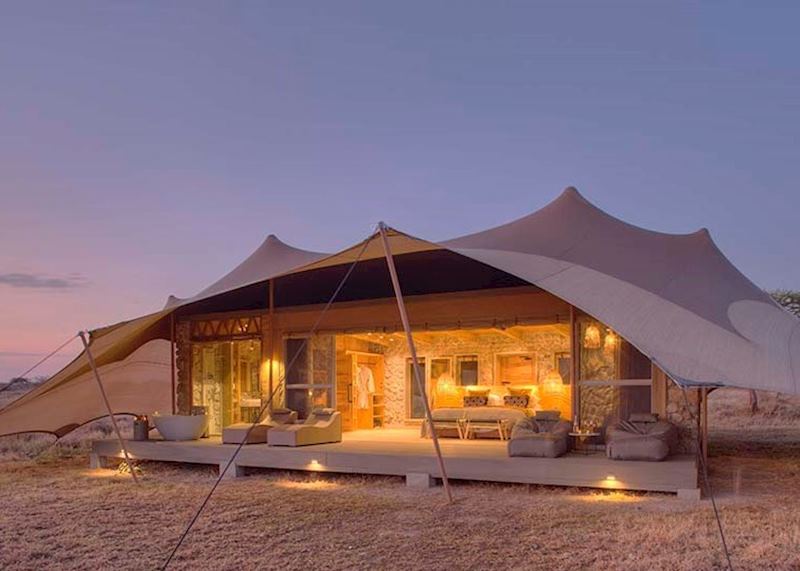

I loved Namiri Plains, a tented camp located on the site of a former cheetah research base in eastern Serengeti. This part of the park sees fewer visitors, and the camp has a thriving population of predators.
The camp itself comprises an intimate collection of canvas en suite tents with fronts that open out to give you far-reaching views over the plains. From here, you can join twice-daily drives, or, for an additional cost, take a sunrise hot-air balloon ride over the park.
Ngorongoro Crater

With soda lakes, hot springs, and dormant craters, Northern Tanzania and its volcanic landscapes add another dimension to your safari. The most impressive of these is, without doubt, the Ngorongoro Crater, which is the largest intact, unflooded caldera in the world. Its 600 m (2,000 ft) walls form a gigantic natural bowl, protecting the wide range of wildlife inside (including the Big Five).
Peering over the edge, the entire 20 km (12 mile) wide dent in the Earth stretches before you, filled with vivid-green grass and isolated acacia woodland. During my last visit, I was itching to get down there and see what animals I’d encounter.
You can spend a whole day in the crater with your guide in search of wildlife. Added to the Big Five, there are healthy populations of zebras, wildebeests, hyenas, and Thomson’s gazelles. Elephants roam the Lerai Forest in the southwest of the crater, while lakes and rivers support hippos and wading birds, including flamingoes, storks, and pelicans.
The most eagerly sought animal is the black rhino. The crater is a great place to see this critically endangered species, though sightings are never guaranteed.
Where to stay near the Ngorongoro Crater
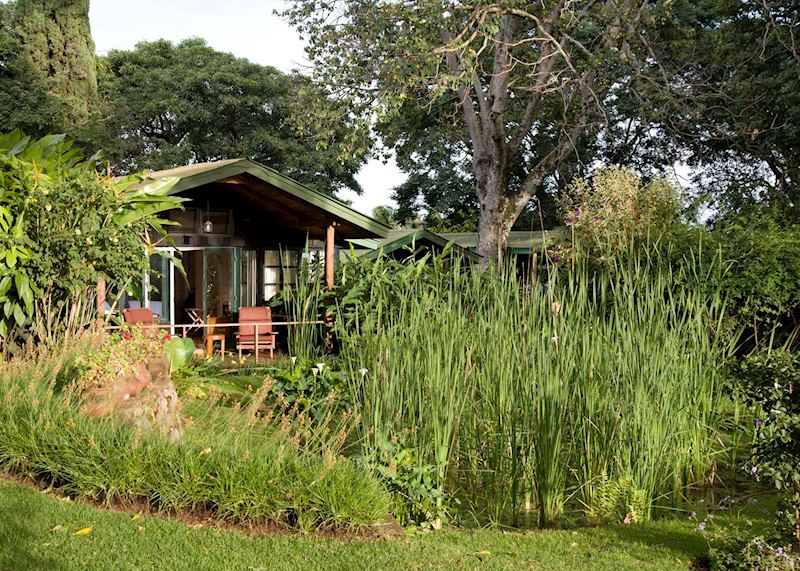
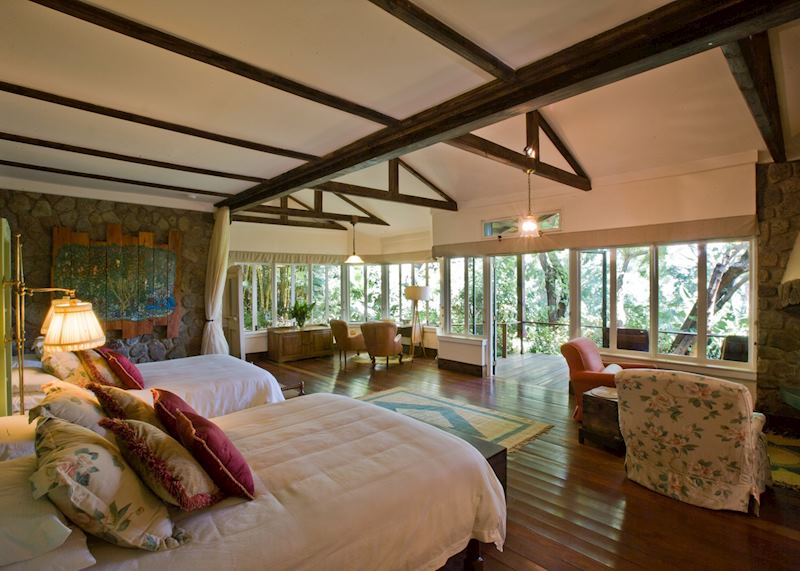
There are several lodges set right on the crater rim, but the location comes at a price. Instead, I prefer to stay just outside the town of Karatu at Gibb’s Farm, around half an hour’s drive from the crater.
This rustic farm offers a completely different experience to a typical safari lodge. Its spacious one-bedroom cottages are positioned on a hill overlooking green farmland, and you can take part in various farm activities, from feeding pigs to milking cows and making bread.
Lake Manyara National Park

Set at the base of the Great Rift Valley escarpment, Lake Manyara is one of Tanzania’s smallest but, in my opinion, most visually striking parks. As you drive, you have the huge, jungle-clad wall of the escarpment rising on one side, while on the other is the vast, flat saline lake, its waters and bright patches of salt shimmering in a heat haze.
The park is one of the best places for birdwatching, with more than 400 recorded species, from flamboyantly plumed bee-eaters to silvery-cheeked hornbills. If you’re lucky, you might spot a bright pink flock of lesser flamingoes.
Marshland surrounds the lake, providing habitats for hippos, elephants, and buffaloes, while zebras, wildebeests, and giraffes wander across the grasslands. Blue and vervet monkeys rustle in the branches of acacia, mahogany, and sausage trees, where you can also listen for the howls of baboon troops and look for tree-climbing lions.
It’s not known for sure why lions here adopt this unusual perch — some believe it’s to help them regulate their temperature, while others have suggested it’s a way of avoiding tsetse flies.
Where to stay near Lake Manyara National Park
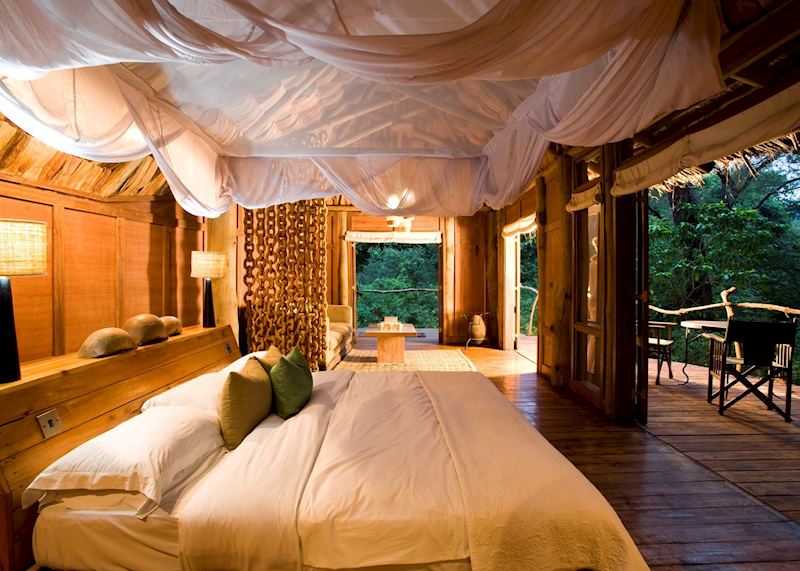
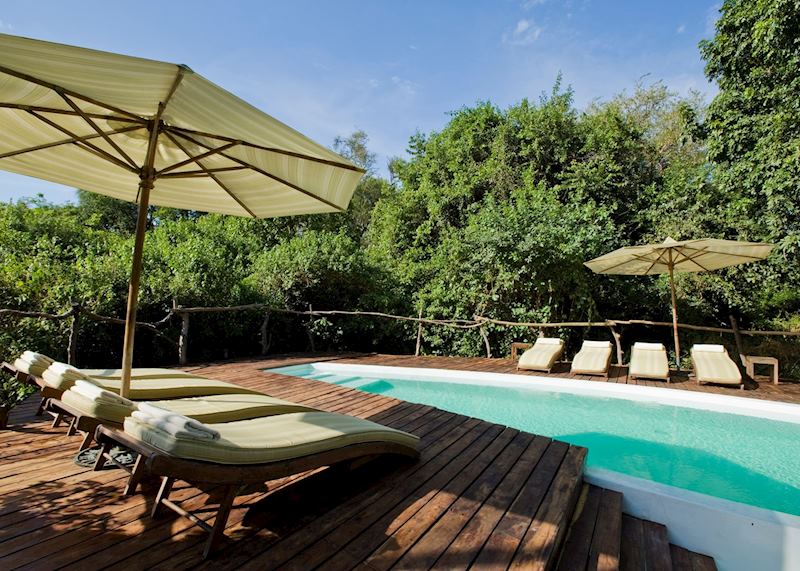
I suggest visiting the park with a guide in a day from Gibb’s Farm, which is less than an hour’s drive away. If you’d prefer to stay longer, &Beyond Lake Manyara Tree Lodge is a characterful option inside the park. Its luxurious treehouses are set on stilts among the branches of mahogany trees.
Safaris in southern Tanzania
Nyerere National Park
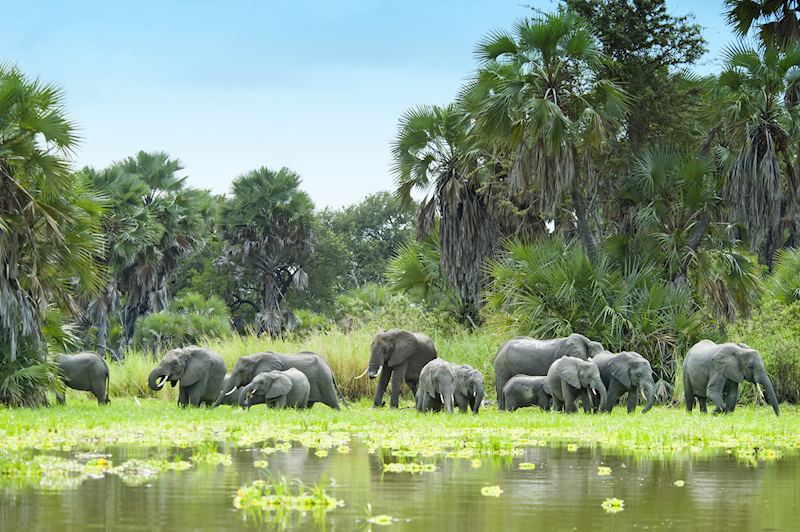
Arriving into Nyerere National Park — the largest protected area in Africa — felt like I was flying over the Amazon. The thick Rufiji River was the shade of milk chocolate as it curved through the green landscape below, occasionally splitting off into different directions and leaving oxbow lakes behind.
It wasn’t long before I was out on the river as part of a boat safari — one of the many things that sets this reserve apart. The boat churned through the water, then the driver cut the engine and we were left to drift in silence.
With no engine noise, we could listen to birdsong and hear the sound of hippos honking nearby. You can poise your camera ready to capture kingfishers, egrets, bee-eaters, and fish eagles. Then, in a heart-thumping moment, you might discover that a supposed bit of driftwood is actually a crocodile basking in the sun.
Returning along the river, you stop at a sandbank for sundowners and watch as the trees become silhouettes against the pink and orange sky, the water tinged in a warm glow.
The Rufiji is the lifeblood of Nyerere National Park, particularly during the dry months of June to October, when giraffes, elephants, and leopards come to drink and hunt. Buffaloes and antelopes graze on the fertile grasslands, hunted by lions and thriving packs of wild dogs — a rarity elsewhere in the country.
You can often head out on a wildlife drive and see no one else around — it’s that quiet here. But what I like most is getting out on foot with a local guide who’ll tell you about the finer details of the reserve’s ecosystem.
On these bush walks, your guide points out smaller wildlife, including insects, reptiles, and birds you might not spot from a 4x4, as well as identifying native plants and trees. There’s a different level of excitement and energy when you’re out in the open, knowing that you’re treading where buffaloes, lions, and giraffes may have stood mere hours ago.
Where to stay in Nyerere National Park
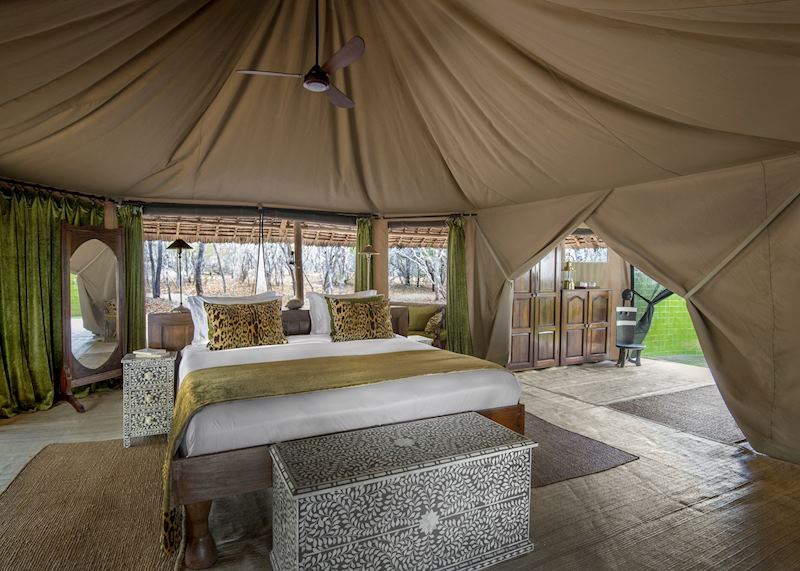
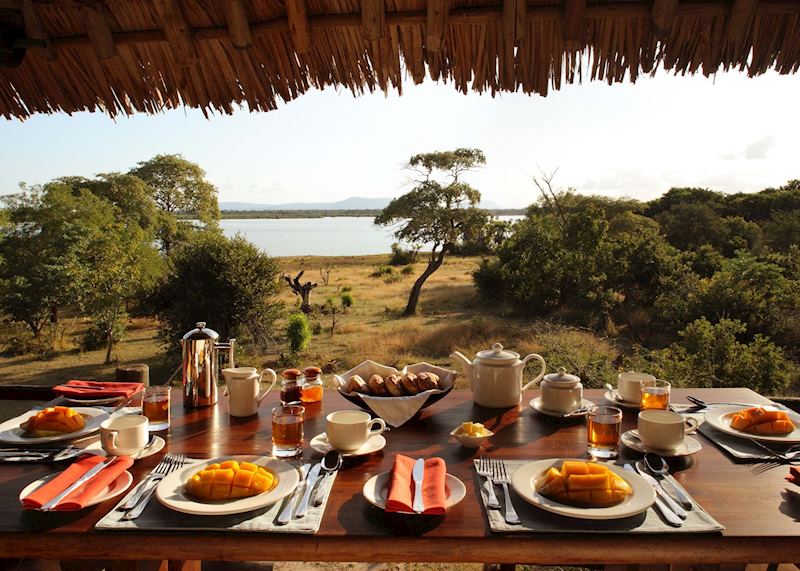
Siwandu, on the shores of Lake Nzerakera, is a classic tented safari camp. Furnished to a high standard, each tent has a large wooden bed, ceiling fan, outdoor shower, and woven rugs. The guides here are excellent, and each evening you can enjoy a candlelit dinner in the boma (an outdoor communal area set around an open campfire).
Ruaha National Park

I thought I knew what it felt like to be somewhere remote until I visited Ruaha. Farther west than Nyerere National Park, it takes longer to reach, but the extra effort means more solitude. In this unspoiled wilderness you can revisit the early days of safari, surrounded by nothing but wildlife.
It’s rare to see any other visitors while out on wildlife drives. Instead, you’re likely to encounter a lot of lions — the park supports around 10% of all remaining lions in Africa. You might also see skulking leopards, grazing herds of zebras and impalas, cackling striped hyenas, and buffaloes and elephants drinking from the Ruaha River.
Ruaha has a higher altitude than Nyerere National Park, so its landscape is much drier, sprinkled with baobabs, granite kopjes, and seasonal rivers (a contrast that means both areas work well in a single trip). Days are mostly spent taking drives into secluded areas, though most camps also offer walking safaris.
The wildlife here tends to be warier of humans than in the north, which makes sightings all the more rewarding. Guides are incredibly knowledgeable about the park and know the best places to find whichever species you’re most interested in.
Where to stay in Ruaha National Park
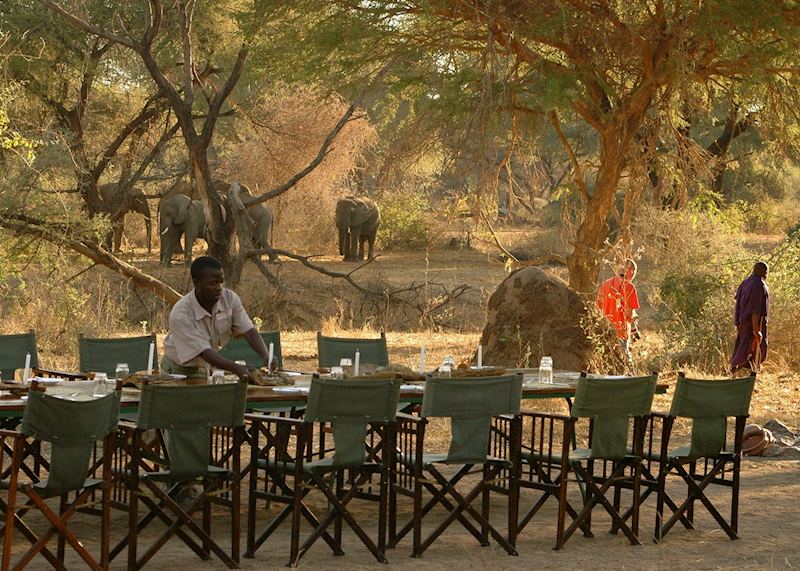
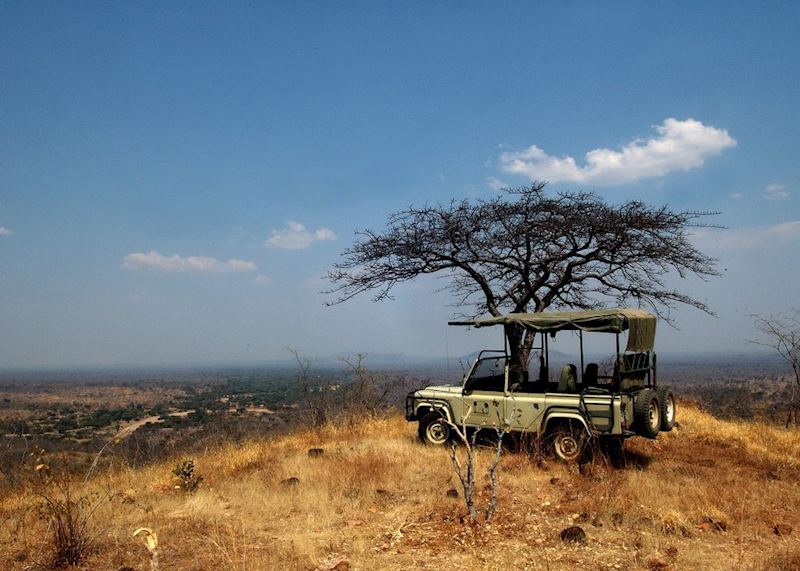
I’m drawn to Mdonya Old River Camp for its rustic atmosphere, which blends seamlessly with the surrounding remote environment. Your simple but comfortable en suite tent is lit by kerosene lanterns, and you wake to the breaking light of day amid the bush’s dawn chorus.
Set beside the Mdonya River, you can often see animals and some of the park’s 500 bird species from camp. Candlelit meals are served on the sandy banks.
Best time for a Tanzania safari
Tanzania is an almost-year-round destination, with the only months to avoid being March, April, and May. The drier months from June to October are very popular because wildlife regularly congregates around dwindling areas of available water and the vegetation is also much lower. For the Great Migration, I personally like visiting between January and late February when the migration herds and many of the other ungulates have their young, typically on the vast southern plains of the Serengeti.
Safari ideas in Tanzania
Start thinking about your experience. These itineraries are simply suggestions for how you could enjoy some of the same experiences as our specialists. They're just for inspiration, because your trip will be created around your particular tastes.
View All Tours in Tanzania